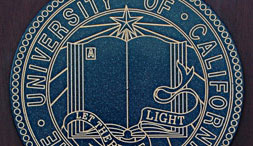Debt spree betrays out-of-touch university system

By Steven Greenhut
SACRAMENTO — Instead of reforming California’s spendthrift bureaucracies, the state’s policy makers have been hiking taxes, seeking cash from the feds, and mulling bonds to fund projects ranging from high-speed rail to tunnels underneath the Sacramento-San Joaquin Delta.
With “tax, borrow and spend” the state’s ongoing motto, why wouldn’t California’s lesser-known government — the $24 billion-a-year University of California system, with a student body the size of Chula Vista spread across 10 campuses — follow in the same footsteps?
The appointment over the summer of Janet Napolitano as UC’s new chancellor sparked controversy given her lack of academic credentials and her civil-liberties record as the head of the Department of Homeland Security.
“(T)he university’s Board of Regents has brought in a veteran at managing and perpetuating bureaucracies, one well-connected enough to keep the federal flow of support coming and to shake more money from the state’s already overburdened taxpayers,” wrote Richard Vedder in a Bloomberg column explaining the real skills needed as chancellor.
In a decision even more telling of their ongoing direction, the UC Regents announced in late September, a week before Napolitano took the helm, that it is floating $2.6 billion in tax-free bonds, its biggest borrowing spree in seven years.
“The regents have raised tuition 84 percent since 2007 to make up for declining state appropriations,” according to another Bloomberg report. With higher state support levels bolstering the new tax-free debt payments, the system can get back to the status quo.
The parallels to the state approach are eerie. California officials have refused to seriously reform their spending. They’ve offered the public the false choice — higher taxes or fewer services, with the public opting for the former.
Likewise, the University of California system has been saying that it needs more money, or students will need to pay higher tuition and fewer of them will be accepted at the already overcrowded campuses. Yet Vedder points to the $100,000 the system spends each year per student and to its armies of employees and divisions of administrators.
“Our campuses and the UC Office of the President already have cut to the bone,” said one UC official quoted by Heather MacDonald in a City Journal article. But then MacDonald ticks off a long list of assistant and associate chancellors, and Orwellian-named departments in the university’s ever-growing “diversity apparatus.” That’s just one small portion of its bureaucracy.
In the private sector, tough times require cuts. In the publicly supported university sector (which includes “private” universities funded by taxpayer-backed loans and grants), officials spend on questionable priorities and when they run out of money, they seek more tax funds and taxpayer-backed debt … or threaten service cuts.
For now, these are fat times again at the University of California. State and university officials are portraying this as a prudent course given some economic rebounds and the state’s improved fiscal situation.
UC, of course, isn’t the only university system relying on debt.
“A decade-long spending binge to build academic buildings, dormitories and recreational facilities – some of them inordinately lavish to attract students – has left colleges and universities saddled with large amounts of debt,” reported Andrew Martin in the New York Times. “Overall debt levels more than doubled from 2000 to 2011 at the more than 500 institutions rated by Moody’s.”
This is a vicious cycle. In June, the Federal Reserve’s Board of Governors warned that rapid increases in student-loan debt is reminiscent of the housing bubble. Students took advantage of the government-backed loans. That free-flowing money enabled universities to keep spending and hiking tuition costs to cover it. Why not? Uncle Sam was shoveling cash to the kids.
The money, however, funds an aging university model that is seeing some challenge from new technologies. California legislators shelved a bill that would have provided education credits for MOOC (Massive Open Online Courses), but eventually the bricks-and-mortar university system will have to adapt, at least in some measure, to lower-cost competition.
The traditional university model isn’t going away any time soon, but it’s worth questioning whether unrestrained investment in campuses and dormitories is the smartest way to invest in the future. Yet the higher-education “community” can’t free itself from its ivy-entangled, hardbound-textbook view of our changing world.
“These institutions have few options,” according to Inside Higher Ed’s look at the college debt crisis. “They can continue to hold off on projects, leading to an aging and potentially unsafe campus and more expensive renovations in the future. Or they can fund projects from their operating budgets, which could siphon off resources for other priorities, such as faculty salaries and student services.”
Are those really the only two choices? The description of faculty salaries as a priority is telling. A system with less access to funds would hold down compensation (and force professors to teach a few more classes, perhaps), but it would also hold down tuition for students and leave them less saddled with debt after they graduate.
Wall Street will always lend the money – and not just to fund university level educational institutions. The California Legislature put the kibosh on “capital appreciation bonds,” which allowed public-school and community college districts to embrace funding schemes reminiscent of loan sharking.
These kind of bonds don’t have to be paid back for decades and they are issued at high interest rates. School districts that used these bonds will have to pay back as much as 20 times the amount they borrowed, according to published reports. Such is the drive by administrators to keep spending and to avoid tough battles over structural reform.
But real reform is exactly what schools and the University of California in particular needs most. Unfortunately, the system is racing headfirst down the path of the status quo. Like the California government, it might continue to work for a while. All good bubbles, though, must eventually burst.
[Source]: Watchdog.org


